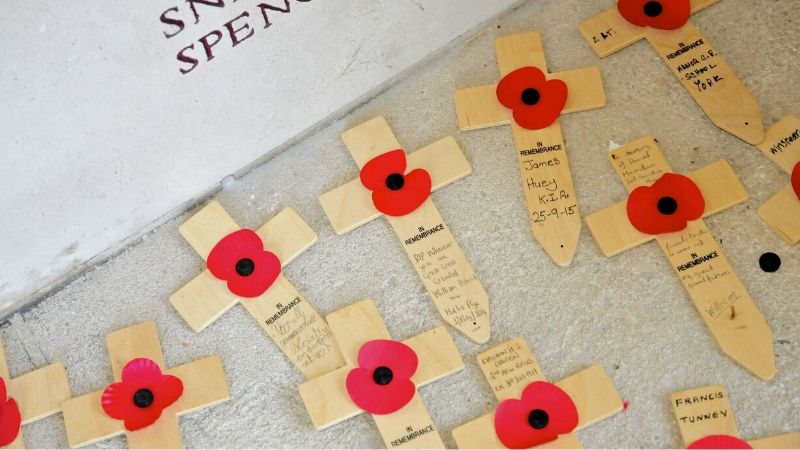
Dedicated to the British and Commonwealth soldiers who lost their lives during the First World War, the Menin Gate is an important memorial and for many school groups visiting Belgium, the Last Post Ceremony is the most memorable part of their tour.
We’ve collated some interesting facts about one of the most significant historical sites in Belgium.
1. The Last Post Ceremony at the Menin Gate Memorial first took place on 2nd July 1928.
It has taken place every night since, with the exception of a 4 year period from May 1940 – September 1944, when it was held instead at Brookwood Cemetery in England.
The ceremony started again in Ypres on the very night it was liberated from the Nazi occupation and still carries some of the battle scars of that period.
2. The playing of the Last Post at the ceremony is an honour awarded to the local volunteer Fire Brigade.
A common misconception is that they are military bandsmen.
3. The memorial arch wasn’t universally approved.
Siegfried Sassoon, one of the leading First World War poets, wrote a poem entitled ‘On Passing The New Menin Gate’ which condemns the monument and questions its objectives.
4. The architect responsible for designing the memorial was Sir Reginald Blomfield.
He took inspiration from the 17th Century Porte de la Citadelle in Nancy.
5. The names on the memorial are of those soldiers with no known grave.
Sadly, on completion of the arch, it was realised that it would be too small to carry all the names.
The date of 15th August 1917 was decided to be a ‘cut off’ point and an additional 35,000 names of soldiers who died after this date are recorded instead at a separate memorial at Tyne Cot Cemetery.
“Our favourite moment was seeing our students lay a wreath at the Menin Gate (Last Post Ceremony) and then to hear about how much it meant to them.”
Mr Sheforgen
International School of Lausanne